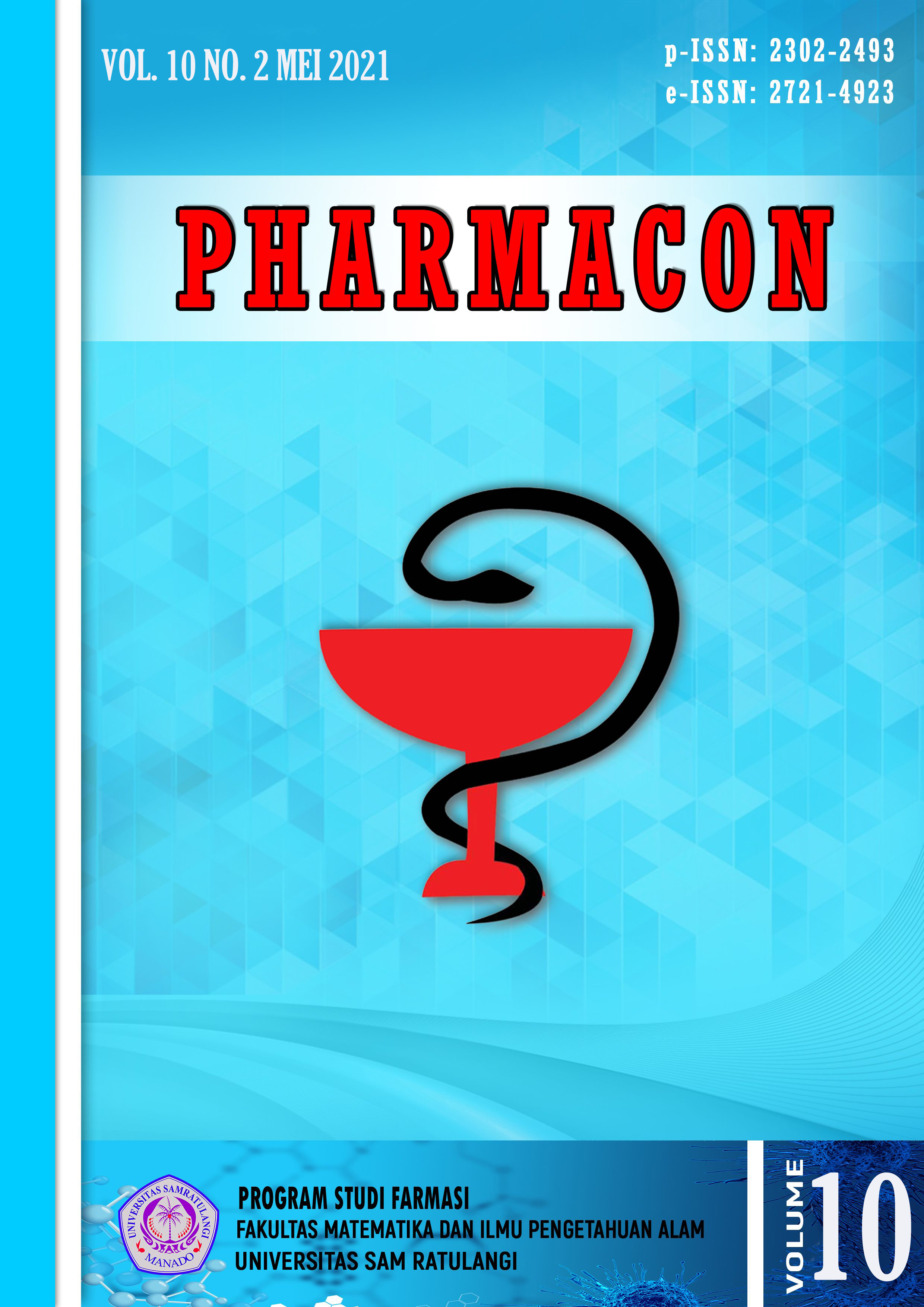UJI AKTIVITAS ANTELMINTIK EKSTRAK ETANOL DAUN SIRIH (Piper betle L.) TERHADAP CACING GELANG (Ascaris lumbricoides) SECARA IN VITRO
DOI:
https://doi.org/10.35799/pha.10.2021.34038Abstract
ABSTRACT
Green betel leaves are one of the native plants in Indonesia which are widespread in Manado, North Sulawesi. In green betel leaves plants, there are tannin compounds that can inhibit enzymes and interfere with the digestive metabolic processes of worms which can cause the death of worms. This study aims to determine the effect of green betel leaves ethanol extract on Ascaris lumbricoides worms. This research is a laboratory experiment with The post-test only with controlled group design. The tests used the betel leaves ethanol extract with concentrations of 5%, 10%, and 15% respectively. Worms was observed for 12 hours with intervals of 3 hours. The number of worm deaths was recorded every 3 hours and further, it was analysed with using the Kruskal Wallis test and it was continued with using the Mann Whitney test. Result showed that extract at concentration of 5% the number of worm deaths was 4 worms, a concentration of 10% was 7 worms, and at a concentration of 15% 9 worms. The statistical results showed that there was no significant difference between the number of worm deaths in the treatment group and negative control at p <0.05. The concentrations of 10 and 15 showed no significant difference with the positive control. It can be concluded that concentrations of 10% and 15% have the same anthelmintic activity but the best concentration is at a concentration of 10%.
Â
Keywords: Anthelmintic, Piper betle L., Ascaris lumbricoides
Â
Â
ABSTRAK
Daun sirih hijau merupakan salah satu tanaman asli di Indonesia yang tersebar luas di kota Manado, Sulawesi Utara. Pada tumbuhan daun sirih hijau terdapat senyawa tanin yang mampu menghambat kerja enzim dan mengganggu proses metabolisme pencernaan pada cacing yang dapat menyebabkan kematian cacing. Penelitian ini bertujuan untuk mengetahui pengaruh ekstrak etanol daun sirih hijau terhadap cacing Ascaris lumbricoides. Penelitian ini ialah eksperimental laboratorium dengan rancangan penelitian The post-test only with controlled group design. Pengujian dilakukan menggunakan ekstrak etanol daun sirih dengan konsentrasi 5%, 10%, dan 15%. Aktivitas cacing diamati selama 12 jam dengan interval waktu 3 jam. Jumlah cacing yang mati dicatat setiap 3 jam dan selanjutnya dianalisis menggunakan uji Kruskal Wallis dan dilanjutkan dengan uji Mann Whitney. Hasil pengujian menunjukkan pada konsentrasi 5% jumlah kematian cacing sebanyak 4 ekor, konsentrasi 10% sebanyak 7 ekor dan pada konsentrasi 15% sebanyak 9 ekor. Hasil statistik menunjukkan tidak ada perbedaan signifikan antara jumlah kematian cacing pada kelompok perlakuan dengan kontrol negatif pada p<0.05. Konsentrasi 10 dan 15 menunjukkan tidak ada perbedaan signifikan dengan kontrol positif. Dapat disimpulkan bahwa pada konsentrasi 10% dan 15% memiliki aktivitas antelmintik yang sama namun konsentrasi yang paling baik terdapat pada konsentrasi 10%.
Â
Kata kunci: Antelmintik, Piper betle L., Ascaris lumbricoides
Downloads
Published
How to Cite
Issue
Section
License
Authors who publish with this journal agree to the following terms:
- Authors retain copyright and grant the journal right of first publication with the work simultaneously licensed under a Creative Commons Attribution-NonCommercial 4.0 International License that allows others to share the work with an acknowledgement of the work's authorship and initial publication in this journal.
- Authors are permitted and encouraged to post their work online (e.g., in institutional repositories or on their website) prior to and during the submission process, as it can lead to productive exchanges, as well as earlier and greater citation of published work (See The Effect of Open Access)










